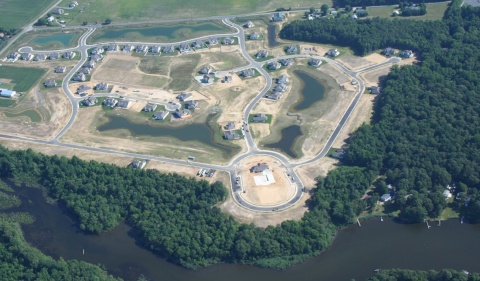
Georgetown, Del., May 17, 2022: Sussex County is giving the environment a little more of its own space.
County Council, at its Tuesday, May 17, 2022, meeting, adopted an ordinance that overhauls the County’s environmental safeguards for critical waterways and wetland areas as development springs up near and around those features. The action represents the most significant update to the County’s environmental protection laws in more than 30 years.
Known as the ‘buffer ordinance’, the legislation sets new rules – including greater distances between development and nature – for protecting and preserving some of the County’s most critical environmental areas. The ordinance follows a yearslong process – called for under the County’s adopted comprehensive plan – that began in early 2019 and involved nearly two dozen stakeholders with expertise or interests in various disciplines, including land use, environmental science, agriculture, and public policy. The County conducted numerous workshops, as well as public hearings, that culminated in County Council’s action this week.
“This has been in the works for quite a while now, and it’s something we have heard about repeatedly from many people in the community: that we need to do more, as the county develops, to protect our waterways and habitats,” County Council President Michael H. Vincent said. “I think this ordinance does that in a big way, and it will help to ensure the very things that make Sussex County so special will remain that way for generations to come.”
Among the most significant changes, the ordinance will:
- Double, from 50 feet to 100 feet, the size of buffering along and around new residential communities that adjoin tidal wetlands and waterways, such as rivers, bays, and streams;
- Add a 30-foot buffer requirement – up from none currently – for new developments along non-tidal wetlands and intermittent streams;
- Prohibit the clear-cutting of trees and other vegetation in buffer areas, leaving them largely in their natural state;
- Give project designers flexibility and incentives in certain zones to ‘average’ a buffer’s size in order to preserve worthwhile ecological features;
- Require site plans to show points of access to buffered waterways for maintenance work, such as removing debris and sediment, that can cause blockages and lead to flooding;
- Establish penalties, up to $10,000 a quarter-acre per occurrence, for intrusion into and/or damage caused to buffers and forested areas.
The 37-page document also provides new and improved definitions, cleans up language to close loopholes, and offers more clarity on the County’s protections for environmentally sensitive areas, said Assistant County Attorney Vince Robertson.
The ordinance will take effect in six months, and will apply only to new residential projects proposed and built within the County’s jurisdiction of unincorporated Sussex County.
“I want to thank everyone who had a hand in this. This was no easy feat, as there were numerous interests to consider and balance among environmentalists, developers, and the agriculture community,” said County Administrator Todd F. Lawson, who led the effort along with Mr. Robertson, Planning & Zoning Director Jamie Whitehouse, County Engineer Hans Medlarz, and other staff. “In the end, I think the compromise we reached will help keep Sussex County the wonderful, natural place we all cherish and love.”
For more information and to view a copy of the adopted ordinance, visit sussexcountyde.gov/ordinances.
###
